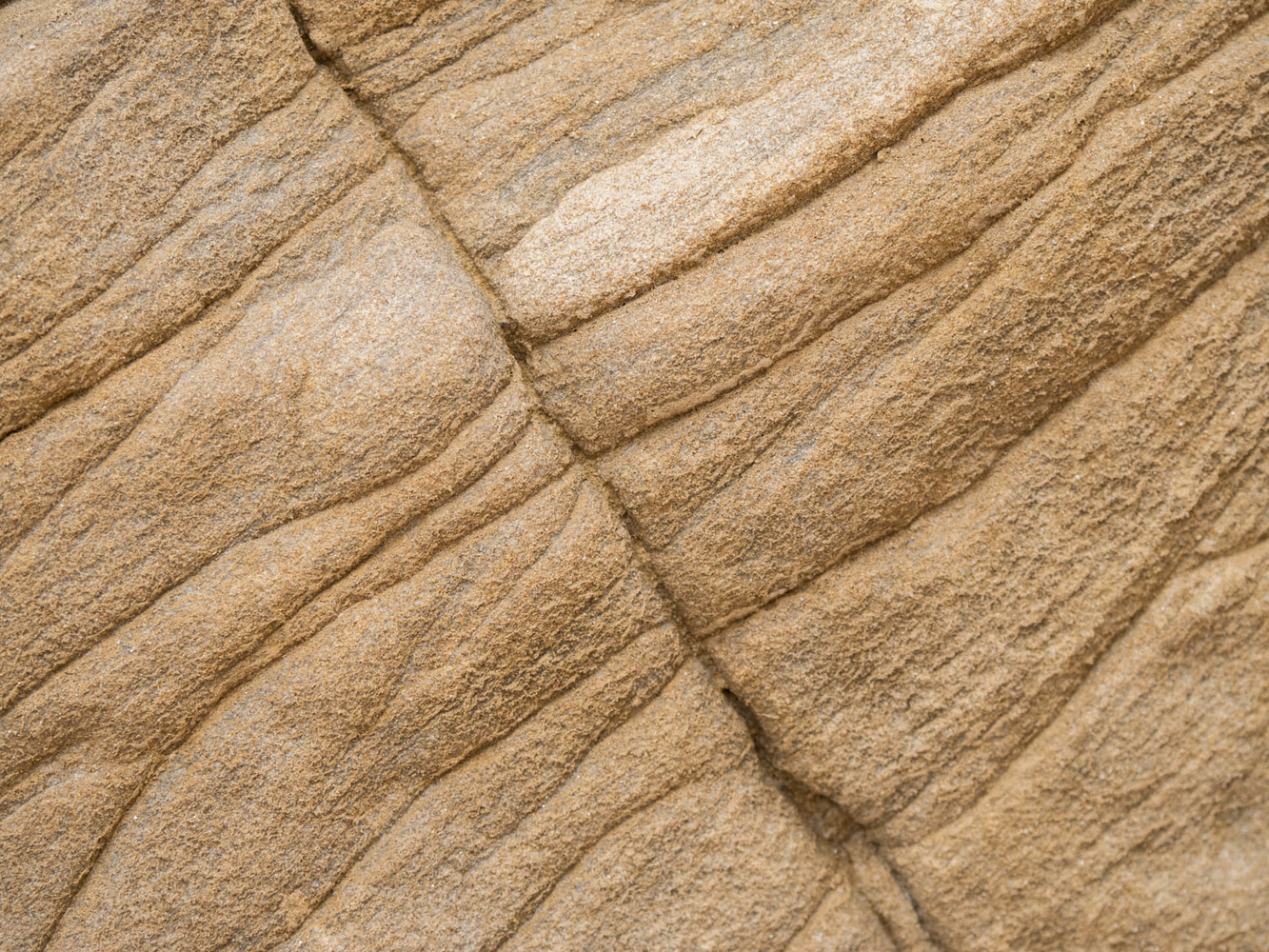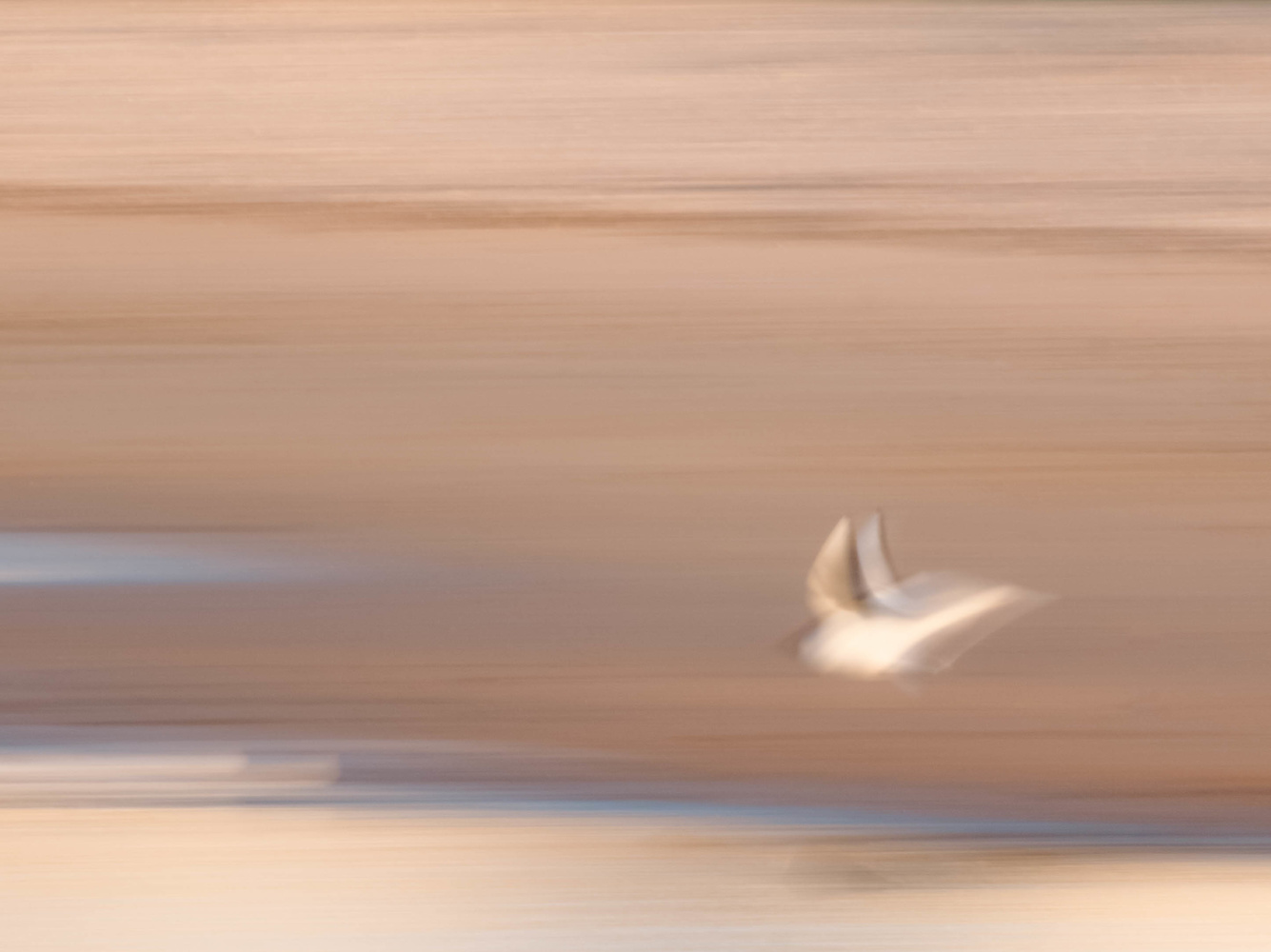Are you not into abstract photography? It’s one of those things you’ll either love or hate. But it's important, and there is much more to it than you might know.
What Is Abstract Photography?
It’s probably easiest to describe abstract photography by starting with what it isn’t. Objective photography is the opposite of subjective. It tries to be matter of fact and not influenced by feelings or personal interpretations of the photographer or viewer. In contrast, abstract photography is intended to be entirely subjective, with the viewer interpreting it according to their personal experience. A catalog photo of a bird on a stick is pretty much as close to objective as you can get, whereas a picture of its distorted shadow on a wall would be abstract. But it is not as simple as that.

All photos fall somewhere within the spectrum of these two extremes. Even a bird photo is subject to personal interpretations and can evoke emotions. That blurred background is an abstraction. It’s not what you saw behind the bird, but that bright smudge is an idea that is open to personal interpretation.
Abstraction is to do with thoughts and ideas rather than matter. Consequently, the abstract image can mean different things to different people. A great photographer sees and thinks about the world in a way that an ordinary person cannot. In abstract photography, this is taken to the extreme. The photographer finds a unique interpretation of reality. Then, importantly, they also allow the meaning of that image to be defined by the individual viewers; they enable the audience to understand the images how they want.

Intentional camera movement (ICM) is a great way of making the subject matter less obvious and enabling the viewer to find their own interpretation of the scene. This was shot over 10 years ago and will evoke very different feelings for me than it will for most viewers.
That personal interpretation requires intelligence and imagination both from the photographer and the viewer. Moreover, it gives the photographer a means of expressing themselves outside the confines of what they perceive as reality.
Like that blurred background behind the bird, in photography, abstraction is usually achieved by removing or changing our usual perception of a scene using different techniques. We represent the world using lines, shapes, form, marks, and colors that do not necessarily match what the eye would see.

Although this image of a solitary crepuscular ray can be considered as a purely objective subject, it can be considered an abstract too and open to personal interpretation by the viewer.
A Criticism of Abstract Photography
Of course, the main criticism is that of the Emperor’s New Clothes. Some random shape or squiggles in a photo could be defined as nothing more than that, without any extra meaning. I heard someone recently describe it as a hoax and a lot of “airy-fairy nonsense.” There is a counterargument to that; the viewer lacks the capacity to extract any other meaning other than it being a set of squiggles.
Nevertheless, the abstract photographer should be okay with that rejection of their work; if a viewer sees their photo as a meaningless set of lines, then that is a valid interpretation. In other words, if you only see a squiggle, it doesn’t matter. It’s okay to construe it that way.

The idea of abstract photography is that the photographer and the viewers see beyond the objective reality; they will all interpret the images uniquely, depending upon their personal experiences.
Moreover, our two-dimensional images are just interpretations of our four-dimensional world. Just as we can change how the world looks to us by squinting, looking through frosted glass, or seeing it reflected from the back of a spoon, is it no less valid to change how it appears in our photos?
The Philosophy of Abstraction
Like many art movements, abstraction is linked to philosophy. It is seen to have a moral, virtuous aspect. Honesty, integrity, simplicity, harmony, acceptance, spirituality, and so forth are all qualities associated with abstract art and photography. Some argue that no art has moral virtues; it’s just art. However, it is both valuable and comforting to think otherwise. Useful because it gives us guidance on how to proceed with creating our images. Comforting because it rejects conflict. For example, how often have people become stressed and angry because they disagree with another’s point of view yet fail to see that their opinion is just as invalid? An abstract photograph is open to whatever interpretation you like, and the photographer is likelier to accept and learn from another’s point of view. So, appreciating that abstract photography might not appeal to everyone is a good thing.

It’s Hard Breaking Free from Naïve Realism in Photography
Naïve Realism is the philosophy that the world around you is exactly as you perceive it. Photography and videography are intrinsically linked to visual reality more than any other art form because a photograph and a movie usually closely resemble what can be seen with the human eye.
Therefore, breaking free from that and creating an abstract image usually means deviating from the methods we typically employ to create a realistic image. Removing elements such as color, tone, the picture’s background, or just placing the camera where our eye would not usually go can create an abstract image.

Are You Already Creating Abstract Photographs?
So, are you creating an abstract photograph if you use abstract techniques? Say you shoot a closeup of a bird to give a shallow depth of field, convert it to black and white, and emphasize its markings with contrast controls in processing Is that an abstract image? Stroll along a boardwalk and place your camera at ground level. Are you then shooting an abstract image? If you want it to be, then yes, you are. If you intend the image to be purely objective, you have achieved that too. Just don’t expect others always to interpret it the same way.

Methods of Abstraction in Photography
We usually try to be precise with our technical settings with photography. With abstract photography, we can abandon what we usually consider the right approach and do something entirely different instead. For instance, we are careful about where we place the focus point. On the other hand, with abstract, we can discard that idea and focus elsewhere on the subject or even in the space in front or behind it.
Much abstract work is related to camera or subject movement during exposure. I enjoy intentional camera movement photography, although it is becoming a too well-used technique now. Likewise, using low light or an ND filter to show movement is also something I love doing. Conversely, breakneck shutter speeds can be used to stop motion and show shapes and patterns that would otherwise be invisible to us.

Another thing we are always trying to achieve is pin-sharp optics in objective photography. So, by employing the opposite of that, we can shun sharpness by using defective optics. We can place transparent obstacles in front of the lens to reduce the image quality or distort the light coming into the lens altogether.

Lens balls images have become a bit of a cliche, but they are fun to experiment with.
Try using prisms, lens balls, scratched filters, filters with gloop applied, and angled glass in front of the lens.

Similarly, we try to get our colors accurate. Colored filters can add strange effects. We usually try to achieve a lack of noise, have the correct exposure, and use good lighting for our photos. In abstract photography, it doesn’t have to be so. By combining different techniques, there are dozens of opportunities to create unique abstract images.

Are you a fan of abstraction, or is it something that turns you off? It would be great to hear your thought and even see some of your photos in the comments.







Even a portrait of a bird on a stick can be highly subjective, and is influenced by what the photographer was specifically trying to capture, and what the photographer wanted the viewer to think and to feel when he or she set out to capture that portrait.
A close up portrait of a person can vary greatly, as the overall look and feel of a head shot is affected by lighting, background, the person's expression and apparent attitude, which person was chosen, etc. A bird photo is no different, really, as all of these factors have a great affect on the way a bird lover will feel when they see the portrait of the bird on the stick. It really comes down to what the photographer intended to tell the viewer about the bird when he/she was taking the photo.
I was wondering and hoping someone would pick me up on that. I was watching a bird photography video where the idea of a BOAS was criticized as being boring, a view I don't hold. Of course, that idea in itself is a subjective one, and its true that any photo can be at either end of the objectivity/subjectivity spectrum depending upon the beliefs of the viewer. However, a close-representation-of-reality photo of a static object is going to err towards the objective for most people. I use the example of a BOAS after toying with the idea of using the example of inanimate subjects, such as a pair of scissors or a cardboard box. But, for me, such photos had the risk of being considered surreal. Alternative suggestions are welcome!
Thanks once again for another insightful comment.
these are beautiful Ivor. Great article!
Thanks, Michelle!
Thanks, Ivor, quite inspirational! I was toying with abstractions long time ago, it seems, now I want to try again :)
That's great. Thanks for the kind comment, I'm glad you enjoyed the article.
Nice article Ivor! I think that some abstract photos are rather cool...others not so much but as was already discussed, it is very subjective. This is another reason not to delete your flubs so quickly...perhaps your settings were wrong or somebody bumped into you as you snapped the shutter release or any other "ooops" moment could in fact result in a rather interesting abstract result. I edited this post to add one of my "ooops" photos from several years ago that resulted in what I thought was a cool photo (to me)...looks like the crowd and stage are on fire!
One of my favorite abstracts happened during a long exposure when the tripod fell over into the river.
Thanks for the kind comment and that shot is great.
I love it when an accident shows us possibilities that we wouldn't have thought of otherwise.
Glad someone wrote about Abstraction as Its not openly discussed. As you wrote, its loved or hated.
I love the topic and do look out for scenes that I believe fall into abstract as it differed way of thinking & PS processing but not always an welcomed area of photography - few of my abstract examples attched
Those are fabulous, exactly what I like! Thanks for your reply and for sharing your images.